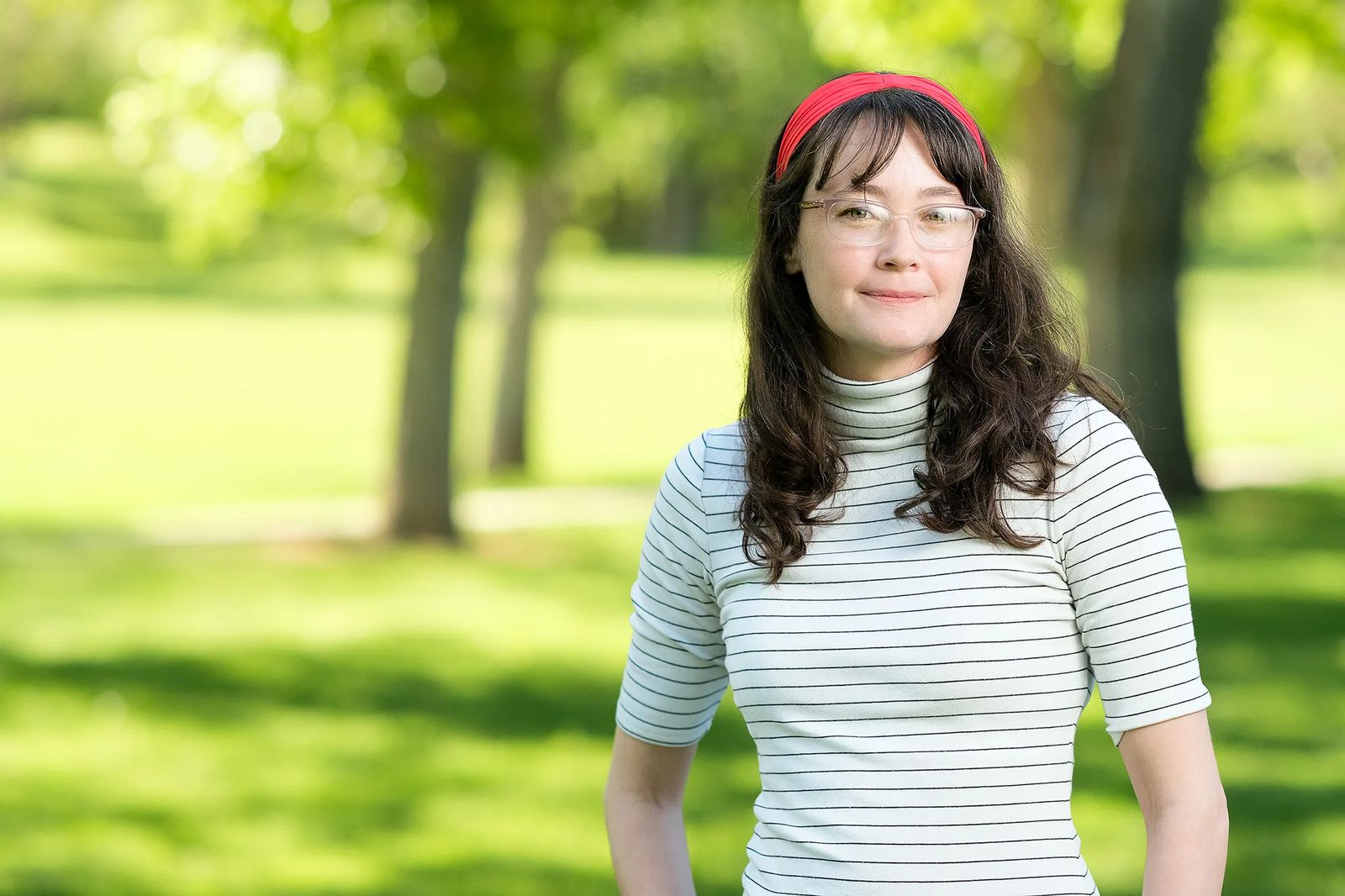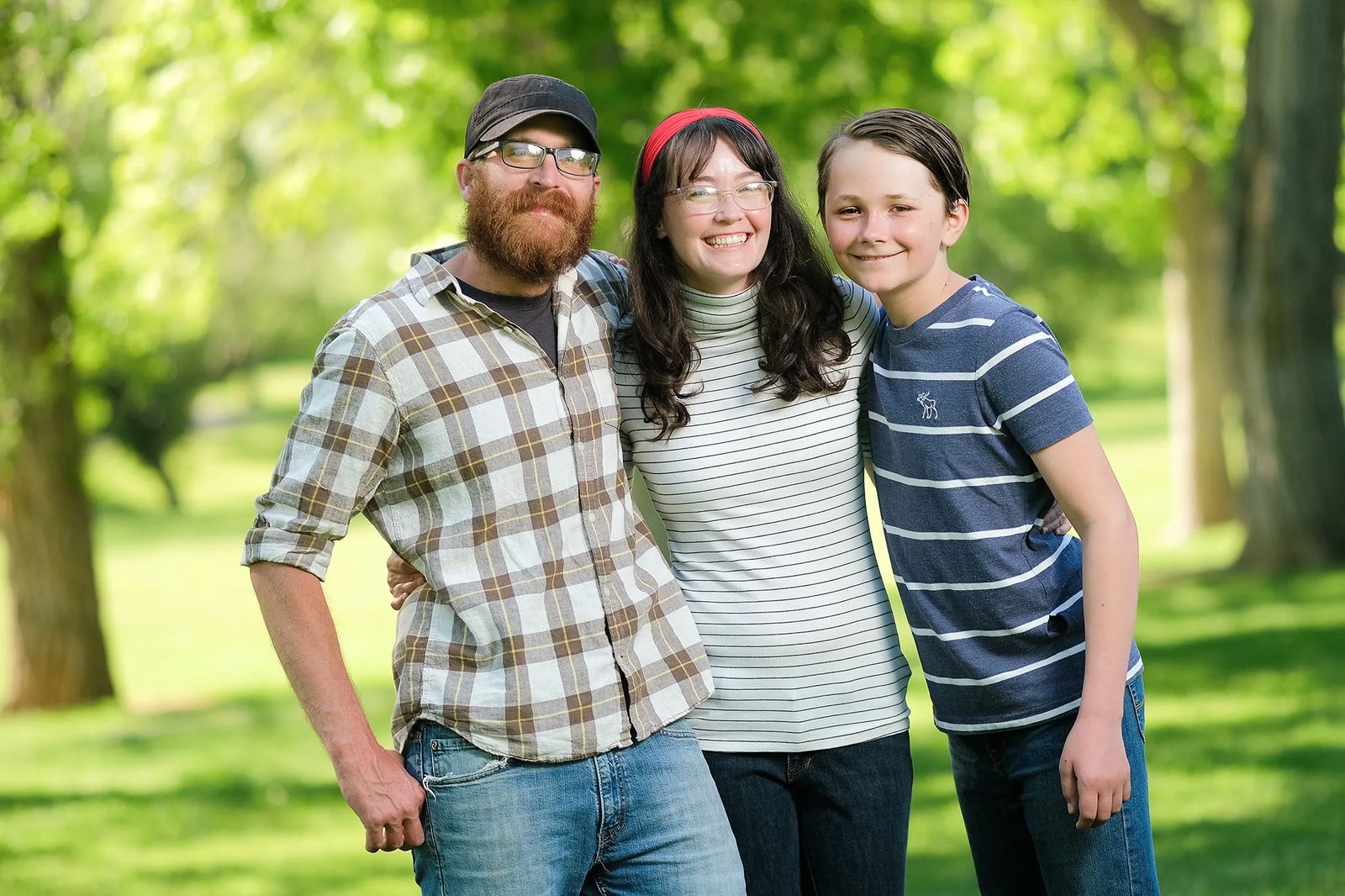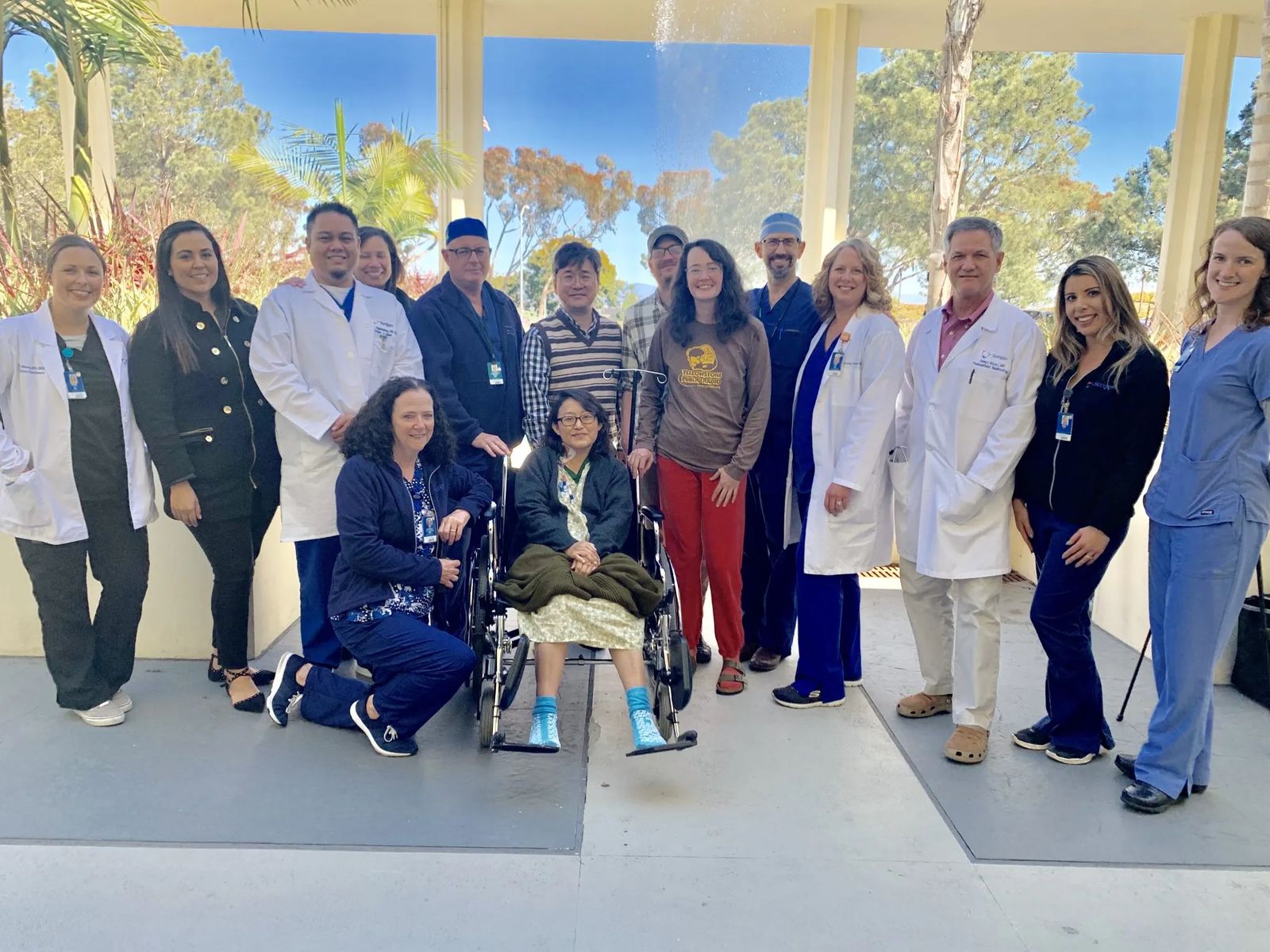
Living the Golden Rule
Billings businesswoman gives a stranger a new lease on life
For most people, it’s not difficult to think about doing whatever it takes to help a family member or a close friend – even donating a kidney to save a life.
But to do the same for a complete stranger? That’s a whole different level of caring. And yet, for Bonny Perkins, it’s a full-circle way of living.
“You won’t go wrong if you treat each other as well as you want to be treated,” she says. “Bad stuff happens and you try to do good things for other people.”
In early March, Perkins, 38, of Billings, donated a kidney to Yung Kim, a 49-year-old mother of two who lives with her husband and children in San Diego. The successful double surgery took place at Scripps Green Hospital in La Jolla, California.

Kim got back her life, caring for her husband, son, 19, and daughter, 14, and teaching piano. Perkins returned to her husband, two sons, and to her business of making and selling bagels
For Kim, the immensity of Perkins’ gift won’t soon be forgotten.
“My life was sadness but suddenly because of Bonny, my life is really changed,” she says. “I can dream everything, I can think about my future, my family’s future, my kids’ future and I can do anything.”
For Perkins, it was just a part of her philosophy on life. Perkins, who can often be found smiling, describes herself as a “pathological optimist.”
“But it is intentional and I have to work very, very hard at it,” she says. “I get social anxiety and have been clinically depressed in the past and I have to consciously stay on top of it or it can swallow me up.”
So she lives a life of gratitude, looking for things to be thankful in her daily life. In the winter she appreciates driving a car with a functioning heater. At a restaurant, she mentally thanks the person who picked the avocado she’s enjoying.
“Even when things don’t turn out how I think I wanted, I just assume it is for the best,” she says.
Perkins shares her life with Beau Schmieding, her husband of five years, and her two sons, Ivan, 20, and Holden, 12. Her sense of humor comes through when she describes how she and Schmieding met.

“We met at the Zombie Walk downtown,” she says. “He was in make-up and I thought, ‘Look at that cute, blood-spattered man.’”
When Perkins was younger, she spent years as a fashion model in New York City, traveling to Europe for runway shows and photo shoots. But eventually the Billings native came back to Montana and earned a bachelor’s degree in communications from Montana State University Billings.
She worked for several nonprofits in town, writing grants and doing data administration.
Then she decided to try something new and completely different: open a bagel stand.
“Grand Bagel went out of business and I was probably their best customer,” Perkins says. “I thought, ‘Someone needs to make bagels. Maybe I’ll do it.’”
She spent months experimenting in a friend’s restaurant kitchen with recipes, deciding on eight types of bagels, as well as cream-cheese toppings. The sourdough bagels are hand-crafted, slow-fermented and kettle-boiled.
Last summer, Schmieding, a mechanical engineer, built his wife a cart for the couple to offer their wares at the farmers market in downtown Billings, often selling out early in the day. Perkins, who named her enterprise The Sourdough Bagel, also delivers bagel orders by bicycle and she’s hoping to open a storefront this summer.
Three years ago, in March, a favorite comedian who Perkins follows on Facebook wrote about an ill friend who needed a kidney. It piqued Perkins’ interest. She had seen children of friends die, as well as a special teacher she knew, and that inspired her to look for ways to help others.
“Nothing you decide is in a vacuum,” she says. “It was a culmination. I was ready to see that, I was receptive to it.”
Perkins emailed the woman, who was working with Scripps, and began the long process of determining whether she was a living donor candidate. Basic medical testing led to a day’s worth of tests at the California hospital, as well as a psychological evaluation to make sure Perkins could handle the procedure.
One question focused on what her husband thought of her decision to be a donor.
“I said ‘He knows I’ve done the research and I feel passionate about living the golden rule,’” Perkins says.
She got the green light to donate a kidney, but it turned out that she wasn’t a match with the original recipient. She then agreed to donate a kidney to someone else in need.
The week of Feb. 25 – her birthday is Feb. 27 – “I went from that potential donor who passed my test to, ‘Can you be here next week?’” She and her husband jumped in their car and drove to La Jolla.
Perkins had no clue regarding who would be in the other surgical suite receiving her kidney. Nor did Kim know the name of her donor.
The transplant wasn’t Kim’s first. Born in Incheon, South Korea, Kim was a graduate student studying music in Seoul when she grew increasingly ill. When she was diagnosed with kidney disease, her mother was the only match to donate a kidney.
The 1994 transplant was successful. Restored to health, she met and married Daniel Kim and the couple moved to Minnesota in 1999. A job change took them and their children to San Diego in late 2013.
By 2015, Kim’s kidney began to fail and, diagnosed with end-stage kidney disease, she was forced to go back on dialysis for hours every day. She was reliving the nightmare of her early 20s, now amplified by her concerns for her husband and children.
“I was thinking about my daughter’s future,” Kim says. “I love her so much and want to support her so much, I’m scared maybe I can’t.”
No one in her family qualified as a donor. And though her husband volunteered, he was not a match either. Then came the call about a potential living donor.
On March 12, Kim and her husband arrived to check in for the surgery. In the waiting room, she looked around the room, wondering if her donor was there. She noticed a man and a woman sitting far from her, and she saw the woman looking back at her. Kim was feeling nervous about the surgery.
“She gave me a big smile,” Kim says. “Most people don’t have a big smile in the hospital because everyone has issues in the hospital.”
She whispered to her husband about the woman.
“I told him she’s like an angel, very nice and gentle and very generous and very bright smiling,” Kim says.
The other woman left the waiting room first, and then it was Kim’s turn. The two women met briefly in the restroom and greeted each other, not knowing who the other one was.
The surgery was a success. The only glitch happened when Bonny, handing her glasses to a nurse, scratched her cornea. She wore an eye patch for several hours, but suffered no lasting damage.

Normally donors and recipients don’t meet for a month. But with Perkins and her husband planning to leave less than two weeks later, the staff arranged for the couples to meet two days after surgery. The two women immediately recognized each other.
“Bonny gave me a big smile,” Kim says. “I couldn’t believe it was her.”
Her first question to Perkins was how she could ever think to give a kidney to another person.
“I’m forever grateful,” Kim says. “She’s really my angel.”
They took a photo together, she says, “and when my son saw it, he thought we looked like sisters.”
Perkins admits she was a little embarrassed by all the fuss made over her as the donor. In her mind, Kim was the hero, living day to day with a life-threatening disease. Then Dan Kim put it into context for her.
“He said, ‘You don’t understand, we weren’t planning on growing old together,’” Perkins says. “He said their kids were so stressed out, worried about their mom all the time.”
The transplant changed all that. It gave the Kim family hope and a new lease on life.
Perkins and her husband returned to Montana, where she spent a couple of months healing from the surgery, regaining her stamina and getting back to her bagel business. She and Kim have stayed in touch, texting each other every few days. Kim recently sent Perkins flowers. And Perkins has the Kim family’s portrait on her mantel.
“We’ll be in each other’s lives forever,” Perkins says.
What it takes to be an organ donor
While deceased-donor transplants continue to be the most common form of transplant in the United States, living donation, especially for kidneys, is growing more common, says Dr. Randolph Schaffer, a transplant surgeon at Scripps Green Hospital in La Jolla, California. He performs all the living donor surgeries there, including Bonny Perkins’.
“On average in the U.S., we typically have between 5,000 and 8,000 living donors a year,” Schaffer says. Transplant recipients around the country can wait anywhere from two to 12 years for a donation to become available. Right now in the U.S., 10,000 people are waiting. “A living donation allows them to shorten the waiting time, essentially to step out of line, so to speak, and get a transplant sooner,” Schaffer says.
Many times, a living donation allows coordinators to find a more compatible match for the recipient. Also, the elective nature of the surgery means the living donor comes into the process healthy, with no serious medical concerns.
A potential living donor goes through a careful screening process, the surgeon says, to answer three basic questions: Is the person healthy enough to give up the organ or a portion of the organ without having a negative impact on their future health? Is the person a good surgical candidate (i.e. the size and shape of the organ?) And, is the patient mentally and emotionally a good donor candidate?
While the vast majority of living kidney donors have a preexisting relationship with the recipient, it may be that the donor and recipient aren’t compatible with each other’s blood types. Something that has become more common is a paired-exchange, in which the donor offers to give a kidney to an unknown recipient, and in return, another live donor compatible with the donor’s friend or loved one donates a kidney to that person.
The kidney exchange between Perkins and Yung Kim went off perfectly, Dr, Schaffer says. And the transplanted organ started working as soon as it was put in place.
“As Yung continues to take care of herself,” Schaffer says, “she will hopefully be able to enjoy a full, rich, happy daily life.”
Give the Gift of Life
WANT MORE INFORMATION ON LIVE-DONOR TRANSPLANTS?
Visit donatelife.net












